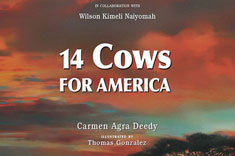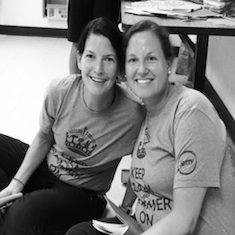Last year in our seventh-grade literacy class, months before the Black Lives Matter movement became a national topic of discussion, we read and discussed an article on the history of blackface. Our discussion ventured into the topic of the Brown v. Board of Education decision that officially ended school segregation. Throughout the discussion and writing, our students demonstrated empathy and compassion for what Black people had experienced, but their overall understanding was that Black people used to be treated badly but now things are better and everyone is treated equally; school segregation is a problem of the past.
If we pause to give you a little background on our school and community, you’ll see where this misguided thinking comes from. We teach in a school and town that is 95.3 percent white, according to the last census data. If you visited, you would probably estimate closer to 98 percent white. Our students are mostly from upper-middle to upper-class families, and although there are problems in every community, most of our students don’t struggle on a day-to-day basis. The schools are mainly white because the people who live in the town are mainly white. This isn’t the segregation of the 1950s and 1960s; it’s more subtle. So, if you’re a student who lives in a town like this, that is just the way things are here.
Backing up to our discussion on the treatment of people of color in our country, we asked, “Why, if segregation is officially not allowed, does our class look the way it does? Why isn’t our student body representative of the people in our whole state or country?”
Students looked around, but seemed confused by the question. One student raised his hand and said, “Because hardly any Black people live here.”
“Why might that be?” Our students were genuinely perplexed.
Fast-forward to this year when we were reading a book called Fourteen Cows for America to commemorate the 19th anniversary of 9/11. This book is set in Kenya and tells the story of an African tribe’s gift to America after the tragedy of 9/11. We paused to discuss the illustrations: “What do you notice about the characters? Where do you think they might be?”
One student raised her hand and said, “They’re African American.” We pointed to the detail that they were in Kenya and corrected her that they were most likely actually African, or Kenyan. We prompted students to notice the way the characters were dressed.
“I notice that they’re poor.” We paused and looked at the photo together, trying to help peel back the layers. The characters were dressed in African tribal clothing; it was certainly very different from the clothing we wear in the West, but there was nothing about how they dressed to suggest that they were poor. Their clothes weren’t dirty or tattered. In fact, the clothes looked elaborate and rich.
What we’ve realized through our discussion on segregation and the inferences about characters in a book that takes place in Africa is that our students come to texts with their own biases, just as we do. These are the biases that come from living in a place where most people are like you and you expect the world to be a fair and just place because it usually is for you. It comes from hearing only one story, and not knowing people and their stories in a personal way, as friends and peers and neighbors. It comes from not having enough windows into a world that you don’t know. We worry what this will mean for our students’ understanding of society.
One of the reasons that we can so readily recognize the biases of our students is that we’ve come to recognize the biases that we ourselves have. A few weeks ago, we were listening to the 1619 podcast from the New York Times hosted by Nikole Hannah-Jones. This podcast is a must-listen for all. In the last episode, “Episode 5: The Land of Our Fathers, Part 2,” listeners hear the story of June Provost, a Black farmer from Louisiana.
As I, Tara, listened to the story of this farmer’s struggles, I was angry and saddened by how he was treated. But there was something else: I realized that I was surprised that he was a farmer. I was upset with myself. Why was the picture in my mind of a typical farmer a white man wearing a straw cap driving a tractor? Why, even when I knew that Black farmers had farmed American land for centuries, was that not the picture in my mind? It was a bias, and I needed to correct it.
So, as we continue to introduce texts to our students with diverse characters and perspectives that offer windows into worlds that they haven’t experienced, it’s important to recognize that it’s not enough to read a text and just feel compassion for the characters in it. There needs to be more. We need to find a way to break down the systems that have placed us in a school where 95.3 percent of our students and colleagues look just like us when in our state only 59 percent of the population actually looks like us.
We need to use the texts we choose to learn and work toward change that makes things truly equitable for all, and one way to do it is to actively recognize our own biases and help students recognize their own.






